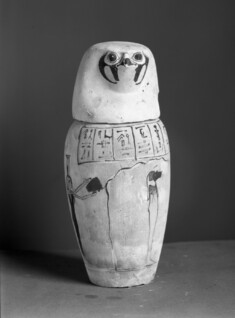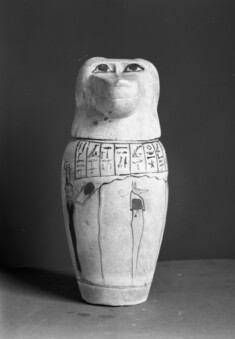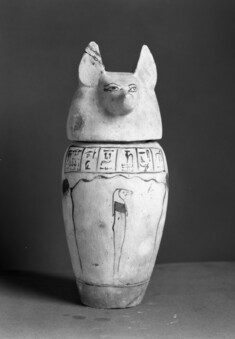Canopic Jar
(Ancient Egypt and Nubia )
During mummification, the internal organs of the deceased were removed from the body and placed in a set of four special containers, the so-called canopic jars. The lids of the jars depicted the heads of a hawk, a human, a jackal, and a baboon, each associated with one of the four "Sons of Horus," the deities responsible for protecting the organs. Responsible for the liver was the human-headed Imsety, while the hawk-headed Kebehsenuef protected the intestines.
Provenance
Provenance (from the French provenir, 'to come from/forth') is the chronology of the ownership, custody, or location of a historical object. Learn more about provenance at the Walters.
Dikran Kelekian, Paris and New York [date and mode of acquisition unknown]; Henry Walters, Baltimore, 1925, by purchase; Walters Art Museum, 1931, by bequest.
Geographies
Egypt (Place of Origin)
Measurements
Jar only H: 9 1/4 × W: 5 11/16 × D: 5 11/16 in. (23.5 × 14.5 × 14.5 cm)
Lid only: H: 4 3/4 × W: 4 1/2 × D: 4 3/4 in. (12 × 11.5 × 12 cm)
Jar and Lid: H: 14 × W: 5 11/16 × D: 5 11/16 in. (35.5 × 14.5 × 14.5 cm)
Credit Line
Acquired by Henry Walters, 1925
Location in Museum
Accession Number
In libraries, galleries, museums, and archives, an accession number is a unique identifier assigned to each object in the collection.
In libraries, galleries, museums, and archives, an accession number is a unique identifier assigned to each object in the collection.
41.88





